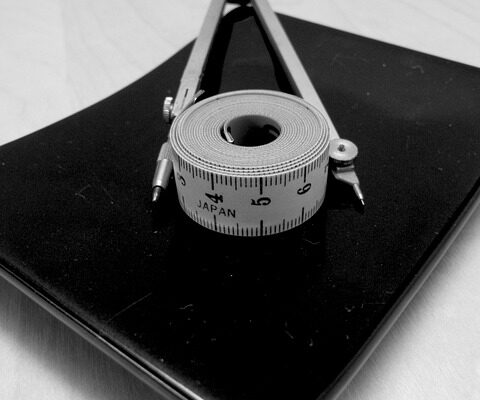Athletes, active adults, and others looking to lose weight frequently wish to lose body fat as well. Having healthy fat levels can improve your health and looks.
If you’re an athlete, it could even provide you with a competitive advantage. According to research, the greatest technique to obtain an appropriate percentage of body fat differs from person to person.
This means that what works for someone else may not work for you in terms of lowering your body fat percentage, and vice versa.
Commonly Asked Questions Regarding Losing Body Fat
If your objective is to lose body fat, it’s natural to have a few questions both before and throughout the process.
Some of the most often-asked questions about fat loss are as follows:
- Is spot reduction a legitimate method of losing body fat?
- Is there such a thing as an exercise fat-burning zone?
- Which is better for fat loss: diet or exercise?
- Can I boost my fat reduction by eating certain meals or taking supplements?
If you are feeling overwhelmed by questions like these, know that you are not alone. Fat loss is difficult for many people, which is why around 72 percent of the US population is overweight or obese. But losing fat begins with establishing a goal.
Fat Loss Objectives
Whether you want to lose weight for better health or to increase sports performance, the ultimate goal is to lose fat.
Active people or athletes who seek to reduce their body fat percentage usually fall into one of two categories:
- Their body fat levels cause people to be overweight or obese.
- They are thin yet want to lose more body fat, such as sportsmen participating in weight-sensitive sports.

Before you can decide on the best approach to shed body fat, you must first grasp what fat loss is. It’s especially important to understand the relationship between calories, how our bodies use energy, and how both might affect our body fat levels.
Body Fat, Calories, and Energy
Maintaining a stable weight requires you to achieve an energy balance. An energy balance occurs when the amount of calories consumed equals the number of calories expended or burned.
Calories are units of energy derived from food that our bodies consume both during normal functioning (for example, breathing) and during physical activity.
An easy method to understand how calorie intake and expenditure affect you over time is as follows:
- If you take in the same number of calories that your body burns, your weight remains constant.
- You will gain weight when your in-take calories are more than you burn.
- Weight loss starts when you consume fewer calories than you burn.
The simplest strategy to create a calorie deficit is to increase output (exercise) while decreasing input (calorie intake). Yet, this is dependent on each individual’s amount of exercise. An endurance athlete who burns a lot of calories through exercise may be able to increase their calorie intake while still losing weight.
How Food Type Influences Fat Loss
The three macronutrients—carbohydrates, fats, and protein—are all necessary for good health and fitness. Carbohydrates and fats are used as primary and secondary energy sources by the body. Protein is used to grow and repair muscle tissue rather than to increase energy.



Balancing these macronutrients based on energy production is critical for losing body fat because each one produces a different amount of energy when consumed:
- Carbohydrates: 4 calories per gram
- Protein has four calories per gram.
- Calories per gram of fat
Because fat comprises nine calories per gram, you may feel that consuming less fat is the greatest way to lose fat. Nevertheless, this is not the case.
Body Fat Does Not Usually Equal Dietary Fat
Active individuals and sportsmen rely on calories from all macronutrients to lose body fat and maintain lean muscle. Finally, the number of calories consumed vs. the number of calories burned influences whether we store food as fat.
Furthermore, because of a more relaxed off-season diet, active individuals and athletes frequently have higher levels of body fat when not competing. Unfortunately, this can lead to calorie restriction when training begins, which is not the optimal technique for body fat loss.
To achieve a healthy body weight and body fat percentage, consider the following:
- Is my ideal weight conducive to good health and eating habits?
- Is my target weight increasing my chance of injury?
- Is my target weight conducive to healthy age-related body growth, including appropriate reproductive function?
- Can I maintain my ideal weight without resorting to persistent dieting or caloric restriction, both of which may result in disordered eating behaviors?
Additional Factors Influencing Fat Loss
Several factors, other than the number of calories consumed or expended, can influence your energy balance (and consequently your fat loss).
These are some examples:
- Your diet’s energy density or how carbs, protein, fat, fiber, and water are distributed in your diet.
- The type of energy your body needs while exercising, whether carbohydrates or fats.
- The nature of your workout, as well as its intensity and length.
- Any non-sport physical activity you engage in, such as walking and yoga
- Whether you lead a sedentary lifestyle when not training or working out.
Several of these elements, as you can see, are related to physical activity. It is very simple. More active you are, the more energy your body expends. Fat loss occurs when your calorie expenditure exceeds your calorie intake.
Raising Energy Output to Lose Weight
How much fat you burn for energy varies from person to person. And can be influenced by things such as:
- Basal metabolic rate – the number of calories you burn just to survive.
- The number of calories burned during exercise is known as exercise activity thermogenesis (EAT).
- The number of calories burned during non-exercise physical activity is known as non-exercise activity thermogenesis (NEAT).
- The number of calories expended after eating certain foods.
Being physically active during the day is one strategy to boost your energy consumption over time. Another option is to start a regular workout routine.
Workout Suggestions for Body Fat Loss
Exercise is essential while trying to reduce fat because when your weight decreases, your body undergoes a process known as thermogenic adaptation. Thermogenic adaptation is what lowers your metabolism, which means you burn fewer calories.
As a result, athletes should keep an eye out for weight reduction plateaus. If you reach a plateau, you may need to adjust your energy input (calories consumed) or energy output (physical activity) to start losing weight again.
Participating in a resistance training program can also boost energy output by increasing muscle mass. Consuming extra protein promotes muscle growth. High protein diets can also reduce adaptive thermogenesis, increase fat burning, and make you feel fuller.
Choosing the Appropriate Energy System for Fat Loss
To sustain our workouts, the body employs several energy systems and, as a result, various energy sources. The type of exercise we undertake determines whether this energy source is our body’s fat.
- Our bodies use the phosphagen energy system during short-term, vigorous activity lasting five to fifteen seconds (weight lifting and sprints). Our muscles’ creatine phosphate and adenosine triphosphate (ATP) stores provide fast energy.
- The glycolysis system is used by the body during intensive activity lasting 30 seconds to two minutes (interval training or HIIT exercises). Carbohydrates transformed into blood glucose (sugar) or muscle glycogen provide energy in this system (the stored form of glucose).
- The aerobic system provides energy to the body during long-duration, low-intensity exercise (walking, jogging, endurance running). Carbohydrates (blood glucose) or fats that have been stored provide the fuel to physical power activity.
While long-duration, low-intensity exercise is optimal for fat loss, altering our energy systems allows our cells to burn fat more efficiently. Circulation improves as well, increasing the availability of fatty acids as an energy source during physical activity. As a result, add a variety of exercises to your fitness routine.
Metabolic Rate and Body Fat
Metabolism refers to the mechanisms that our bodies use to keep us alive. The food and beverages we consume provide the fuel for these processes. The greater our body’s efficiency in turning these fuels into energy, the hotter our internal furnaces burn.

According to research, calorie restriction and weight loss can damage our internal furnaces (metabolism) and thus our energy expenditure. Another research indicates that losing weight can reduce the number of calories burnt during exercise.
Some experts suggest that when an energy shortfall is too severe, the body enters adaptive thermogenesis. This may explain why weight loss plateaus occur even when calories are restricted.
Athletes and active individuals should shed fat slowly to avoid metabolic dysfunction and adaptive thermogenesis. Strive for tiny energy deficits and track your progress to ensure you’re losing body fat in a safe and healthy way.
Hormones can impact fat loss
Hormones are also important for energy intake, energy output, and total body composition.
The following hormones can have an impact on our ability to reduce fat:
- Thyroid hormones, which aid in metabolism regulation
- Leptin is the hormone produced by fat cells that affects energy availability and expenditure.
- Insulin and cortisol are hormones produced by the adrenal glands that aid in metabolic activity.
Unfavorable alterations in these hormones can occur as a result of calorie restriction or low body fat. The body will defend itself by retaining energy reserves and boosting our hunger, causing us to eat more.
Keeping normal hormone activity is critical when attempting to lose body fat. According to research, tiny changes to the energy we consume (the meals we eat) are the most effective at maintaining our body’s operations while yet reaching our desired fat levels.
Dangerous Ways to Lose Weight
Athletes and physically active adults may feel compelled to achieve optimal body composition for their sport. As a result, some people resort to risky weight-loss practices. Some of these strategies include voluntary dehydration, calorie restriction, and disordered eating.
The National Athletic Trainers Association has provided guidelines to properly reduce body fat in an effort to reduce harmful weight loss procedures, which include:
- Establishing reasonable weight loss objectives
- Establishing individual body composition targets
- Weight-loss goals must be balanced with optimal health and performance
Optimal Body Fat Percentages
Each person’s optimum body fat percentage is unique. As a result, this percentage should take into account your health, exercise level, and body weight goals. Nonetheless, here are some typical ranges to aim for based on gender and age.
Recommended Body Fat Percentage By Age and Gender
| Age Female Male | ||
| 20-29 16-24 % 7-17 % | ||
| 30-39 17-25 % 12-21 % | ||
| 40-49 19-28 % 14-23 % | ||
| 50-59 22-31 % 16-24 % | ||
| 60 + 22-33 % 17-25 % |
If you participate in a specific sport, your optimal body fat percentage may change. Long-distance runners, for example, tend to perform better when they have lower levels of body fat, according to research.
To Conclude
Body fat reduction is a dynamic process for athletes, active adults, and even novice exercisers who desire to lose weight. If this is your aim, you must follow proper nutrition and activity guidelines to achieve safe and healthy fat loss.
Learning the appropriate balance of energy intake and output for you is part of achieving the ideal physique. Slowing down guarantees that your body continues to run efficiently enough to support your workouts—and your health—while attaining your goals.
